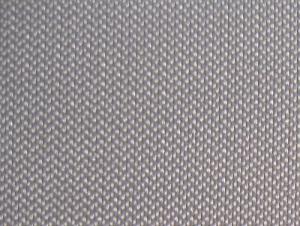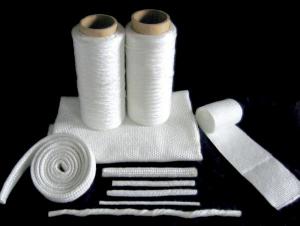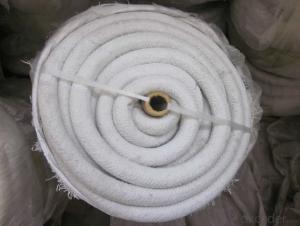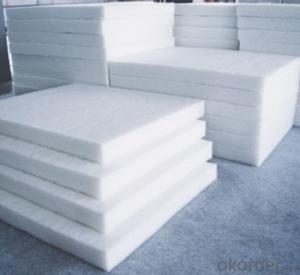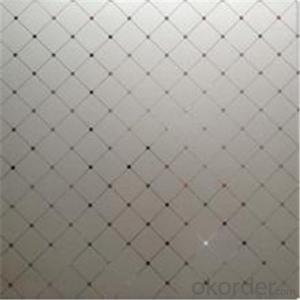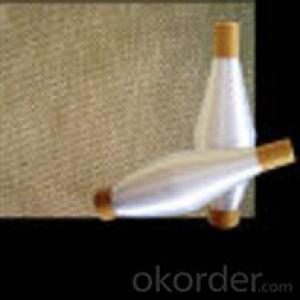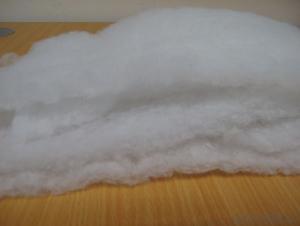Industrial Textile Ceramic Parts Product
- Loading Port:
- Qingdao
- Payment Terms:
- TT OR LC
- Min Order Qty:
- 500 pc
- Supply Capability:
- 10000 pc/month
OKorder Service Pledge
OKorder Financial Service
You Might Also Like
material : 95% alumina ceramic
A variety of specifications available, ceramic eyelet, ceramic pigtail, ceramic wire guide, etc.
Advantage:
1.Using the high hardness of the ceramic material, wear resistant.
2.Precise in size .
3.Precision polishing of surface can reach 0.2, smoothly.
4.Complete product specifications.
Function:
Suitable for using in textile machinery, twisting machinery,fine spinning, weaving machinery and knitting machinery.
Data&Item | Hight Frequency Ceramic | 75% alumina Ceramic | 95% alumina Ceramic | 99% alumina Ceramic | Titanium Oxide | Zirconia | Mullite |
Content | steatite 85% | alumina≥75% | alumina≥95% | alumina≥99% | Titanium Oxide≥90% | Zirconia≥90% | 3ALz032si02 |
Fring temperature(°C) | 1350±20 | 1400-1450 | 1650-1680 | 1780-1800 | 1450±20 | 1550-1600 | 1260-1540 |
Bulk density(fired) (g/cm) | 2.8 | 3.2 | ≥3.6 | ≥3.8 | ≥3.7 | >6 | 3.25 |
Dielectric Strength(kv/mm) | 15 | 13 | 15 | 15 | 15 | ||
Water absorption(%) | <0.02 | <0.015 | <0.01 | <0.01 | <0.01 | <0.01 | <0.01 |
Compressive Strength | 560 | 2200 | 2400 | 3700 | 7200 | 5000 | |
Hardness(HRA) | ≥75 | ≥75 | ≥82 | ≥88 | ≥80 | ≥85 | 65-70 |
Volume Resistance (cm) 25°C | ≥1012 | >1012 | >1012 | >1012 | <1012 | >1012 | ≥1012 |
Flexural Strength(MPA) | 126 | 280 | 320 | 400 | 150 | 700 | 180 |
Thermal Expansion(*10) 25°C-700°C | 6-7.5 | 6 | 6.2-8.5 | 6.8-8 | 9-10 | 4-4.4 | |
Permittivity(MHZ) | 6 | 5.5 | 8.5 | 9.5 | 7 | ||
Roughness(Ra) | ≤0.8 | ≤0.8 | <0.1 | ||||
Mirror Polish | <0.3 | ≤0.1 | ≤0.05 | ≤0.03 |
- Q:What are the different types of glass fibers used in textiles?
- The different types of glass fibers used in textiles include E-glass, S-glass, C-glass, and A-glass. Each type has different properties and characteristics that make them suitable for specific applications.
- Q:Are glass fiber textiles suitable for geotextile applications?
- Yes, glass fiber textiles are suitable for geotextile applications. They offer excellent strength, durability, and resistance to chemicals and environmental factors. Glass fiber textiles can effectively separate, filter, reinforce, and drain soils in geotechnical projects.
- Q:Can glass fiber textiles be used in reinforcement of carbon fibers?
- Hybrid composites, which consist of glass fiber textiles and carbon fibers, are commonly used for reinforcement purposes. The utilization of glass fiber textiles alongside carbon fibers can yield numerous benefits. First and foremost, glass fibers are a cost-effective alternative to carbon fibers, as they are relatively inexpensive. This affordability makes glass fibers a viable choice in applications where cost plays a significant role. Moreover, glass fibers possess exceptional mechanical properties, including high tensile strength and stiffness. By combining them with carbon fibers, the resulting hybrid composite exhibits enhanced mechanical properties compared to utilizing carbon fibers alone. This, in turn, leads to improved structural integrity and performance in a variety of applications. Furthermore, glass fiber textiles contribute to the impact resistance and fracture toughness of the composite. With their greater resistance to impact, glass fibers aid in preventing delamination or cracking in the carbon fiber matrix. Nevertheless, it is crucial to consider the specific requirements of each application when choosing reinforcement materials. While glass fibers offer certain advantages, they have lower specific strength and stiffness in comparison to carbon fibers. In cases where weight reduction is of utmost importance, utilizing carbon fibers alone or in combination with other high-performance fibers may be more suitable. To summarize, glass fiber textiles can indeed be utilized for reinforcing carbon fibers, resulting in a cost-effective solution with improved mechanical properties and impact resistance.
- Q:Are glass fiber textiles suitable for electrical insulation?
- Yes, glass fiber textiles are suitable for electrical insulation. Glass fiber textiles are made from thin strands of glass that are woven into a fabric-like material. This material has excellent electrical insulating properties due to the non-conductive nature of glass. It is capable of resisting high voltages and does not conduct electricity, making it ideal for applications where insulation is required to prevent electrical shocks or short circuits. Additionally, glass fiber textiles have good thermal resistance and can withstand high temperatures, which further enhances their suitability for electrical insulation. They are widely used in various industries such as electrical engineering, electronics, and aerospace for applications such as insulating wires, cables, and electrical equipment.
- Q:Are glass fiber textiles resistant to mildew growth?
- Yes, glass fiber textiles are resistant to mildew growth.
- Q:How do glass fiber textiles affect the drape of fabrics?
- Glass fiber textiles can significantly alter the drape of fabrics. Due to their stiffness and lack of flexibility, glass fiber textiles tend to make fabrics stiffer and less fluid, reducing their natural flow and drape.
- Q:Are glass fiber textiles resistant to biological degradation?
- Glass fiber textiles possess resistance to biological degradation. They are manufactured from inorganic materials like silica, limestone, and soda ash. As these substances lack organic components, they do not serve as a viable food source for the majority of microorganisms or pests. Consequently, glass fibers exhibit high levels of resistance to biological degradation. This characteristic renders glass fiber textiles an excellent option for situations that necessitate protection against biological growth and decay, such as in outdoor furniture, construction materials, and automotive components. Additionally, glass fibers also demonstrate resistance to mold, mildew, and insect infestations, thereby enhancing their overall durability and lifespan.
- Q:What are the different coating options for glass fiber textiles?
- The selection of coating options for glass fiber textiles depends on the intended application and desired characteristics. There are several choices available: 1. Silicone Coating: These coatings, based on silicone, are well-liked for their remarkable heat resistance, flexibility, and water repellency. They give the glass fiber textiles a smooth and glossy finish, making them suitable for insulation, fireproofing, and protective clothing. 2. Polyurethane Coating: Polyurethane coatings provide enhanced abrasion resistance, durability, and chemical resistance. They act as a protective barrier against moisture, oils, and chemicals, making them perfect for industrial aprons, conveyor belts, and outdoor covers. 3. PTFE Coating: PTFE coatings are famous for their non-stick properties, high temperature resistance, and low friction. These coatings create a smooth and non-porous surface on the glass fiber textiles, making them suitable for release sheets, conveyor belts, and insulation tapes. 4. Acrylic Coating: Acrylic-based coatings offer good UV resistance, flexibility, and moisture resistance. They are commonly used for outdoor applications such as awnings, canopies, and outdoor furniture covers. 5. Vinyl Coating: Vinyl coatings provide excellent weather resistance, flame retardancy, and chemical resistance. They are commonly used for applications requiring durability and protection against harsh environmental conditions, such as truck covers, tents, and tarps. 6. Latex Coating: Latex-based coatings offer good flexibility, adhesion, and water resistance. They are often used for applications such as gloves, medical textiles, and waterproof garments. When selecting the appropriate coating option, it is important to consider the specific requirements and intended use of the glass fiber textiles.
- Q:Can glass fiber textile be used in wind turbine blades?
- Yes, glass fiber textile can be used in wind turbine blades. Glass fiber textiles are commonly used in the construction of wind turbine blades due to their high strength, lightweight nature, and excellent resistance to environmental elements. These properties make glass fiber textiles an ideal choice for manufacturing wind turbine blades, enabling them to efficiently harness wind energy for electricity generation.
- Q:How should the glass fiber felt be used in detail?
- So, what's the use of glass fiber?Glass glass fiber rope twisted, can be called "the king of the rope." glass rope a finger as crude, actually be able to lift a truck full of goods! Because the glass rope not afraid of corrosion, no rust, so as a cable crane sling, very suitable synthetic fiber products do. Although the rope firmly, but it will melt at high temperatures, and the glass rope but not afraid, therefore, the lifeguard used glass rope special security.
1. Manufacturer Overview |
|
|---|---|
| Location | |
| Year Established | |
| Annual Output Value | |
| Main Markets | |
| Company Certifications | |
2. Manufacturer Certificates |
|
|---|---|
| a) Certification Name | |
| Range | |
| Reference | |
| Validity Period | |
3. Manufacturer Capability |
|
|---|---|
| a)Trade Capacity | |
| Nearest Port | |
| Export Percentage | |
| No.of Employees in Trade Department | |
| Language Spoken: | |
| b)Factory Information | |
| Factory Size: | |
| No. of Production Lines | |
| Contract Manufacturing | |
| Product Price Range | |
Send your message to us
Industrial Textile Ceramic Parts Product
- Loading Port:
- Qingdao
- Payment Terms:
- TT OR LC
- Min Order Qty:
- 500 pc
- Supply Capability:
- 10000 pc/month
OKorder Service Pledge
OKorder Financial Service
Similar products
New products
Hot products
Hot Searches
Related keywords



